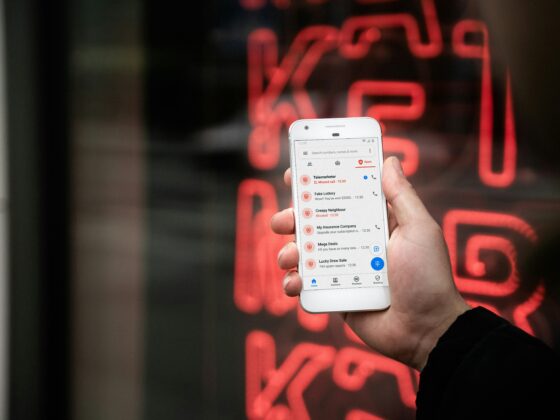
For the hospitality industry, the summer travel season may be a financial high point, but it’s also one of the most challenging periods for cybersecurity. As guest traffic increases, so does the volume of digital activity – and with it, the risk of cyberattacks.
Summer creates enormous strain on hospitality systems and staff. IT teams are focused on keeping operations running smoothly, while security oversight often takes a back seat. That shift creates an opening for attackers, who time their efforts to coincide with seasonal surges in bookings, check-ins, and loyalty program use.
To stay ahead, hospitality tech leaders need to understand why these seasonal risks persist – and what they can do to reduce exposure during the industry’s busiest months.
Peak Season Vulnerabilities
The summer travel season creates a perfect storm of cybersecurity challenges for hospitality businesses. With higher volumes of online bookings, mobile check-ins, and loyalty program activity, the number of guest interactions involving sensitive personal and payment data surges. This activity puts heavy strain on IT teams, making it harder to spot fraud – and easier for cybercriminals to slip through.
Compounding the risk is the seasonal influx of temporary staff, often hired quickly with minimal cybersecurity training. Even well-intentioned workers can make simple errors – clicking on phishing links, mishandling guest data, or using weak passwords – that lead to major consequences. Meanwhile, the push to provide fast, mobile-first experiences means more systems are online and thus vulnerable.
What’s more, third-party booking engines, payment processors, and mobile apps, while critical to operations, often fall outside the direct control of internal IT teams. That makes it harder to apply consistent security policies or detect vulnerabilities early. And when attackers target a shared vendor or platform, a breach in one system can ripple across multiple properties or brands.
The result is a high-pressure environment in which operational demands, workforce turnover, and expanding digital dependencies combine to create significant cybersecurity blind spots – just when the stakes are highest.
Building Collaborative Defenses
Cybercriminals work in fast-adapting groups that often target multiple brands and platforms at once. Defending against that kind of threat landscape requires the same level of collaboration on the other side.
The good news is that the hospitality sector’s reliance on a shared digital ecosystem also creates an opportunity for collective defense. Because so many businesses depend on the same booking platforms, payment systems, and third-party vendors, a threat identified by one organization can serve as an early warning for others.
Joining forces with other hospitality organizations through trusted intelligence-sharing groups – such as industry information sharing centers, cybersecurity working groups, or vendor-led threat exchange platforms – turns isolated incidents into practical, sector-wide insights. These communities allow peers to share emerging vulnerabilities, indicators of compromise, and response strategies in real time, helping others anticipate and neutralize threats before they escalate.
This kind of collaboration is especially valuable during peak seasons when resources are stretched thin. With IT teams focused on uptime and guest services, peer-shared intelligence supports faster, better decisions – without big jumps in headcount or budget.
Just as importantly, these shared insights help reveal patterns that might otherwise go unnoticed. A phishing campaign targeting one hotel chain today could easily be aimed at others tomorrow. By pooling threat intelligence and incident reports, organizations can spot coordinated attack campaigns, identify vulnerable points and adjust defenses before attackers gain broader traction.
In a busy season, when a single breach can ripple across the industry, collective defense is one of the most effective tools hospitality businesses have to stay ahead.
Practical Steps for Hospitality Tech Leaders
No hospitality organization can eliminate cyber risk entirely, but tech leaders can reduce exposure with targeted preparation. That begins with reviewing and updating incident response plans to reflect today’s threat landscape – including phishing, credential-based attacks, and vendor-related risks – and adjusting for seasonal conditions like high transaction volumes and short-term staffing. Clear escalation paths, well-defined responsibilities, and pre-season testing can help ensure a faster, more coordinated response if something goes wrong.
Strengthening frontline defenses should follow. Focus security efforts where guest data is most exposed: tighten access controls, enforce multi-factor authentication, and monitor for credential stuffing attempts that can blend in with legitimate traffic. Shared threat intelligence can help prioritize protections based on active attack patterns seen across the sector.
Temporary staff remain a frequent vulnerability during busy periods. Rapid onboarding shouldn’t come at the expense of security awareness. Even brief, targeted sessions on recognizing phishing attempts, safeguarding guest data, and reporting incidents can reduce human error. Threat-sharing communities often flag emerging phishing tactics that can be quickly integrated into staff training.
Third-party risk also rises with increased operational demands. Security teams should confirm whether key vendors and partners are participating in relevant intelligence-sharing initiatives. A threat spotted in one system can serve as early warning for others – and collaborating on these insights strengthens defenses across the ecosystem.
Finally, increase visibility where it matters most. Real-time monitoring tools capable of flagging abnormal transactions, credential reuse, and suspicious access attempts are essential during high-risk periods. Shared threat data can further sharpen these tools, offering early indicators of active campaigns before they reach your network.
Final Thoughts
The summer travel season amplifies both opportunity and risk for hospitality businesses. Joining trusted intelligence-sharing communities allows tech leaders to stay ahead of fast-moving threats – protecting guest data, safeguarding operations, and preserving brand trust when it matters most.








